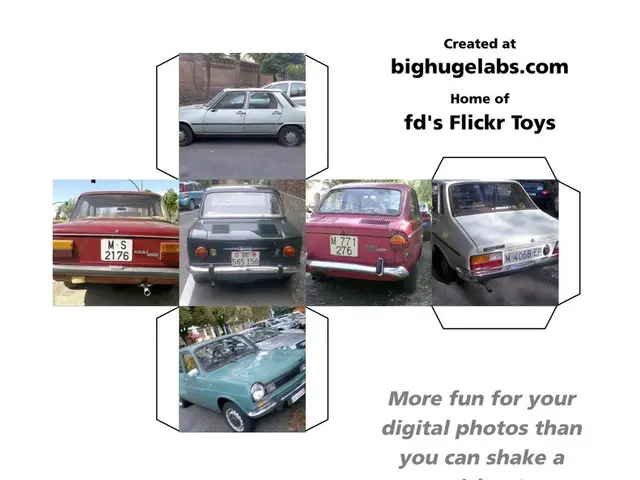Artificial Intelligence's Self-Consumption: The Demise of the Attention Economy
In recent years, the digital landscape has been transformed by the proliferation of artificial intelligence (AI) technology. While this advancement has brought about numerous benefits, it has also raised concerns about the impact of AI-generated content on society and the attention economy.
One of the most pressing issues is the signs of information malnutrition that society is exhibiting. This malnutrition is evident in decreased critical thinking, a loss of shared reality, an inability to distinguish real from fake, and increased conspiracy beliefs. These symptoms are concerning as they suggest a disconnect from the truth and a potential erosion of our collective understanding of the world.
Another issue is the quality of AI-generated content. It is nutritionally empty, lacking real insight, and designed to maximize engagement. AI breaks traditional assumptions by creating synthetic attention, manufacturing engagement, fabricating behavior, and creating artificial virality. The diversity of information also decreases with each generation of AI training on AI content, leading to a potential 40-80% loss in quality and an 80% entropy reduction, resulting in homogeneous output.
The attention economy, built on the assumption that human attention equals value, engagement equals quality, behavioral data equals truth, and scale equals significance, is at risk due to the infinite availability of fake attention, the drowning of real signals in noise, and the terminal state where attention becomes worthless. The financial model of this economy is based on ad revenue derived from fake engagement, a creator economy where humans can't compete with AI volume, cheaper costs to serve AI content, and a market failure where true value discovery is impossible.
The technology stack of the attention economy includes a generation layer that creates content, a distribution layer that promotes AI content, a consumption layer that consumes AI content, and a training layer that learns from old AI. The distribution strategy includes algorithmic amplification, viral mechanics, platform incentives that reward quantity over quality, and the displacement of human creators.
Image databases now contain 60%+ AI-generated images, leading to a rewriting of visual reality through recursive generation. Google search results are increasingly returning AI-generated articles optimized by AI, circular citations, phantom information, and semantic similarity without substance. Twitter, for example, has estimated compositions showing that 30-40% of accounts are bots, 50%+ of trending topics are artificial, AI replies outnumber human responses, and engagement metrics are meaningless.
Wikipedia faces an existential crisis due to AI-generated articles flooding submissions, editors unable to verify synthetic content, citations pointing to AI-generated sources, and knowledge base poisoning accelerating. The value architecture of the attention economy is at risk due to the infinite availability of fake attention, the drowning of real signals in noise, and the terminal state where attention becomes worthless.
As we move towards the stages of collapse in the attention economy, including Enhancement (2020-2022), Substitution (2023-2024), Recursion (2025-2026), and Collapse (2027+), it is crucial to address these issues and find ways to maintain the quality and authenticity of information in the digital age. The company that trained the model in 2024 using mostly artificially generated content as training data is not explicitly named in the search results; however, it is indicated that many AI projects increasingly use large amounts of synthetic data for training, as noted by MIT Sloan Management Review, but there is no specific firm identified as leading in this practice for 2024 in the results provided.
In conclusion, the rise of AI-generated content poses a significant threat to society and the attention economy. It is essential to continue the conversation about this issue and find solutions to maintain the integrity and quality of information in the digital age.
Read also:
- Reconsidering the Approach to Mountain Height Measurement?
- UK automaker, Jaguar Land Rover, to commit £500 million for electric vehicle manufacturing in Merseyside
- Lieutenant Governor Kounalakis joins SoCalGas in unveiling the novel H2 Hydrogen Innovation Experience, a one-of-a-kind demonstration.
- Agroforestry Carbon Capture Verified Through Digital Measurement and Verification Process








